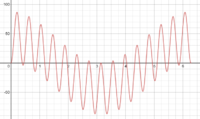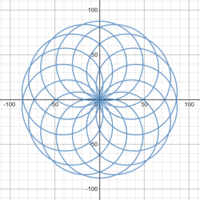Hi, my problem is the following:
I need to find the inverse formula of this equation to get the "t" inside of the cosine.
So, to be as clear as possible, in the end i should have the equation: "t = ...".
[MATH]x = cos(t) - cos(15t)[/MATH]
Thanks to anyone will try to help me.
I need to find the inverse formula of this equation to get the "t" inside of the cosine.
So, to be as clear as possible, in the end i should have the equation: "t = ...".
[MATH]x = cos(t) - cos(15t)[/MATH]
Thanks to anyone will try to help me.


